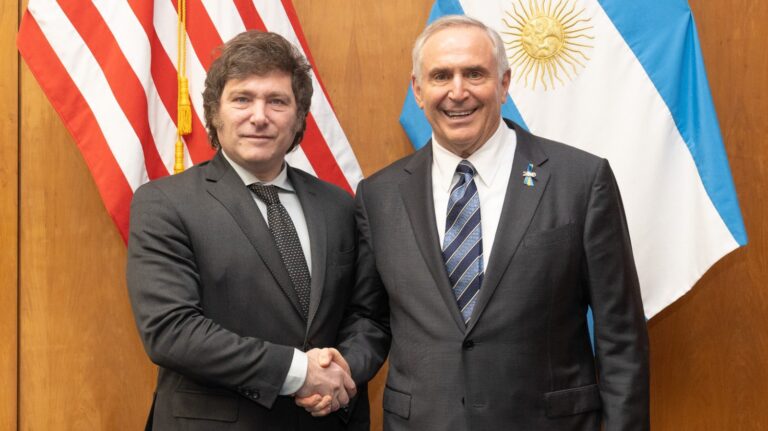The myth of resource scarcity is the rallying cry of those who condemn others for breeding indiscriminately. In this orientation, paradigms for economic and social development are established to reduce demand on “scarce” resources by limiting population. This demonstrates the intrinsic conflict between “subsistence” thinking and authentic social and economic development.
“Authentic social and economic development” is a new concept in human thought. It is the opposite of “subsistence” thinking. Subsistence is based on the assumption that resources are limited. Having anything means depriving someone else. This zero-sum assumption underlies today’s dominant economic systems.
The Flaws of “Subsistence”
The essence of subsistence is that men produce at a very low technological level. Moreover, subsistence economic activity is geared toward producing the minimum necessary to keep people alive. Surplus is sold to buy what people cannot make for themselves, to pay taxes, and service consumer debt. People attempt to save in order to acquire productive assets out of what is left. Reliance on past savings to form capital, though not restricted to subsistence economies, is inevitably linked to subsistence, want and need.
Other characteristics of subsistence economics are 1) restricted ownership, such as ownership of an elite class of landowners or the state 2) corporate and political corruption 3) hard class lines, and 4) widespread envy as a social and political motive.
“Full Development”
The outdated subsistence economy is transcended by the authentic “development” economy, which can be divided into two types: 1) the partly developed and 2) the fully developed. A partly developed economy rises above the subsistence economy by means of technological, methodological and systemic advances, as well as a generally and significantly higher standard of living for everyone. A fully developed economy differs from the partly developed economy primarily in its participation in the common good; that is, by individual participation in the rights, economic institutions and social structures that make up society, especially economic rights and institutions.
There are four characteristics of the fully developed economy. These are: 1) widespread ownership of capital 2) free and open markets 3) private property, and 4) limited economic power of the state.
Faulty Premises
The stumbling block to full development is the overwhelming assumption of “scarcity.” This assumption contends that if resources are absolutely limited, the more people there are among whom these resources will he divided, the less there will be for each person. The “scarcity” assumption is false, and the result of several wrongheaded and illogical premises.
The first wrong premise is that “reducing population promotes economic and social development by lessening demand on scarce resources.” History has shown that population reduction promotes economic stagnation, freezes social development, and causes societies to degenerate. Development occurs in response to increases in demand, not diminution. When demand lessens, the economy stagnates or regresses, sometimes past the point of no return.
The second false premise is that “resources are limited in subsistence, pre-development, and developing economies; therefore resources will be limited in partly developed and fully developed economies.” On the contrary, the definition of development itself includes the provision that available resources increase with demand. The process of economic development is, in large measure, the process of making a wider variety of goods and services of better quality available in greater quantities at lower cost to the consumer. This results from the discovery of additional resources or more efficient use of existing resources.
The third faulty premise is that “resources are limited at the present time. Therefore they will always be limited.” Again, poor logic. Sufficiency or insufficiency of resource supply says nothing about how much will be available in the future, or were they were previously available. This flaw may be adequately addressed by understanding the economic meaning of scarcity, versus the common understanding of scarcity.
Economic scarcity can never be avoided because it describes a condition, not an ongoing event. An insufficiency of resources is addressed and overcome not by economics premised on selfishness but by application of human energy and ingenuity. New discoveries are constantly being made of new sources of, or substitutes for, old materials. Failing that (and human ingenuity has yet to disappoint in this respect) there is the process of what Buckminster Fuller referred to as “ephemeralization”: Doing more with less. In a 1980 radio interview Fuller declared:
I believe it is possible to take care of everybody. Ignorance and fear are the main forces preventing us from nurturing and supporting all growful needs of life. It no longer has to be you or me. Selfishness is unnecessary and henceforth unrationalizable as mandated by survival.1
The usual assumption, however, is that because resources are limited, then we must do less with less. This assumption is wrongheaded, and based on the fib that the society which relies on human ingenuity and technology must somehow regress, instead of moderately advance.
The answer to the problem of depletion of scarce resources lies in taking advantage of improved and advancing technology. Among technology we include advanced management systems and other systems which improve ways of doing things, not just more complex machines. One of the most advanced economic systems is one in which everyone has the opportunity to become an owner of a significant stake of income generating assets. This is accomplished through opening up future ownership opportunities and thus the income generation possibilities of new productive technology created as new wealth for everyone, not just for an elite few or the state.
The fourth error is that “economic and social development causes harm to the environment, and therefore the number of people is bad, in and of itself.” There is nothing intrinsic to economic or social development that automatically results in environmental damage. From one point of view, pollution consists of resources which are not used properly, and are thus wasted. Environmental “depletion” must correctly be seen not as the direct effect of population (a myth expounded by radical environmentalists), but as a function of faulty resource management.
A sustainable standard of living does not automatically come into conflict with a rising standard of living for an increasing population. It simply means that man must again exercise his ingenuity to reconcile desired ends. If current technology and techniques are flawed, the obvious answer is to develop new and better ones. If current resources are insufficient, develop substitutes or a more efficient use of what now exists. It is counter-productive to give up and withdraw from effort.
History shows that a higher level of economic and social development causes a lower rate of population growth and, finally, decline. Aristocracies and upper classes have bred themselves out of existence through failure to maintain sustainable birthrates. Middle classes have maintained a stable population. The poor and the propertyless experience high population growth. For whatever reason, the higher the standard of living, the less incentive to reproduce. Contrary to popular myth, advocating a lower birthrate to promote economic and social development gets things exactly backwards. It confuses cause and effect.
In subsistence, pre-development, and developing economies, the primary factor of production is human labor. The more people who are available to work and who do work, the more wealth created. More children represent a real investment for families.
In subsistence economies, children at a relatively young age begin contributing to the upkeep of the family. Soon, the break-even point is reached. At a point where children are still “dependents,” they have the capacity to contribute an increasing measure of wealth to the family beyond what it takes to maintain them.
This is generally without undue exploitation of children purely as a source of income. In the absence of social welfare programs, children also function economically as a kind of old age insurance.
Perpetual Poverty
The productivity of children declines in a developing or partly developed economy, where the primary means of income generation (production) changes from human labor to capital; that is, from human to non-human factors of production. At this turning point, unless ownership of the new instruments of production is widespread, children either become a liability to the family or society, or a means of income generation only through exploitation, such selling “excess” children into slavery, or having more children to collect a larger share of redistributive welfare benefits.
But child exploitation is not inevitable. There is no intrinsic reason why, as a condition of development, ownership must be concentrated. Population growth causes economic and social development through demand. But unfortunately, in a less than fully developed economy, the people whose existence spurs economic and social development are prevented from participating in it by the presence of barriers to full participation.
Economic Participation
The disconnect between people and full economic development is the result of inhibitions that prevent widespread ownership of capital. The result is poverty. Widespread ownership of capital is an absolute mandate for a fully developed economy because capital produces the majority of goods and services in developing and developed economies.
Historically, dysfunction between population growth and participation in economic growth (widespread poverty in the midst of plenty) is the result of the way that capital formation has been financed. In developing economies, ownership of new instruments of capital has been closed to most people. As inadequate and self-defeating as the strategy ultimately becomes, having more children remains the only means to increase wealth. Ownership, on the other hand, naturally includes participation in greater production, and thus includes greater income resulting from the employment of productive capital.
The War on the Poor
In a subsistence economy, income is generated by human labor. In a developing economy, by capital. As technology advances, human labor becomes less competitive with capital, and consequently less valuable as an input to production. Where people are restricted to gaining income solely from wages, more and more people in a family must obtain wage system jobs in order to secure a declining amount of income.
People are kept poor and economic and social development is retarded through lack of access to the means of acquiring and possessing property. This ensures that most people will stay poor and oriented toward attempting to increase their wealth through the exploitation of their own children, or by gaining a greater share of a decreasing amount of redistributive public assistance. The rich, the source of the redistributed wealth, naturally resent increasing demands on their wealth. They become open to the idea that the poor, by their numbers, are the problem, not poorly structured social and financial institutions.
The drastic and coincident increase in population and poverty in developing economics actually results from the lack of participation in direct and private ownership of the means of production, not from an insufficiency of resources. Societal analysis shows that as diffusion of ownership increases, the fate of population growth decreases, often dramatically. In countries where income ceases to be generated primarily by physical toil, and labor takes other forms, the push to have children decreases, even when the economy overall would benefit by an increase in population.
Population control, as a “remedy” to the “myth of overpopulation,” is invariably tied to denying those same people access to the means of acquiring and possessing private and productive property, This problem is often encouraged by trade “relations” between the developed and developing worlds which come with the strings pi’ population control programs attached. The true law of population and development, on the other hand, is extremely simple, just and effective: Concentrate on full and authentic development and population will take care of itself.
Michael D. Greaney is the Director of Research for the Center for Economic and Social Justice, and the author of an upcoming book entitled “Full Development.”
Endnotes
1 Quoted by Courtland Milloy in The Washington Post, 7 January 1996, B1. Quote changed from third person report to first person speaking quotation.










